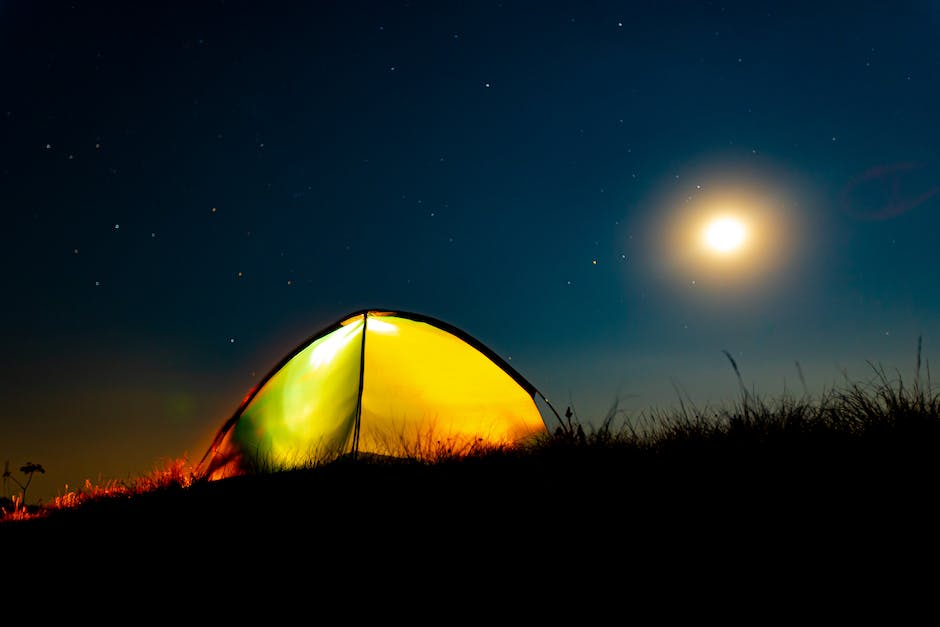Setting up a Solar Panel System for Camping
Camping is a great way to get away from the hustle and bustle of life and escape to the great outdoors. But if you want to stay off the grid, it’s important to be prepared. Solar panels are the perfect way to stay connected for longer camping trips. But the idea of setting up a solar panel system for camping may be a bit daunting. Where to start? What is needed? How much solar do I need? Don’t worry, we’re here to help. With just a bit of knowledge on the setup and planning, you can have a solar powered camping trip.
[recommendations keyword=’camping-solar-setup’]
Get the Right Gear
The most important part of any solar setup is the right gear. You’ll need panels, a charge controller, cables, an inverter, and batteries. These together form the foundation for your camping system.

Solar Panels
Solar panels are the heart of any solar setup, and will be the most expensive part of the system. There is a wide range of sizes and power outputs, and they all have pros and cons. Smaller panels are easier to transport and install, but may not generate as much electricity as larger panels. For camping, consider a medium sized panel with a nominal output of 200W. This should be sufficient to power your devices, with the possibility of adding extra panels in the future.
Charge Controller
A charge controller regulates the electricity from the solar panel and prevents the batteries from overcharging or discharging. It’s an essential component of any solar setup. Charge controllers come in a variety of sizes and power outputs. Depending on the size of the solar panel and battery, you may need to purchase a controller with more power output to ensure your system is functioning properly.
Cables
Cables are an often overlooked, but essential part of any solar setup. To ensure that electricity is getting to all the components of your system, you’ll need high quality cables that are thick enough to handle the current. Depending on the size and voltage of your system, you may need a different size cable for different parts of your setup.
Inverter
The heart of an electrical system is the inverter. It converts the direct current (DC) energy stored in the battery to alternating current (AC) energy that can be used by your devices. It’s important to choose an inverter that is capable of handling the amount of electricity you will be using. If you plan on running more than one device at the same time, consider an inverter with a higher power output.
Batteries
The batteries in a solar setup store the electricity generated by the solar panels, and will be used when the sun isn’t available. Batteries can come in a variety of sizes and technologies, and it’s important to research which battery is best for your specific setup. Lead acid batteries are the most commonly used type for camping setups, and can store a large amount of electricity.

Plan for Your Setup
Now that you have all the gear, it’s time to plan for your camping setup. Calculate the size and placement of the panels, how much wattage they’ll generate, and how much power you need for the duration of your trip. To get a better estimation of the amount of solar you need, consider the amount of energy your devices will consume and the type of climate you’ll be in.
Once you have an estimation of the wattage that you need, consider the size and placement of your panels. Place them in a spot where they’ll receive the most sun, and as far away from shade, dirt, and dust as possible. Consider the angle of the panels and the direction in which they’ll be facing. You’ll want to place them in a location that will give them the most sunlight, prolonging their lifetime and increasing their efficiency.
Set Up Your System
Setting up your system is the fun part. Connect your panels to the charge controller, and the charge controller to the batteries. Make sure to use the proper size cables and fuses. Double check all your connections and verify that everything is securely in place.
Now it’s time to attach the inverter to the batteries. Make sure it’s turned off, and never connect your inverter while it’s powered on. Connect the negative terminal first, followed by the positive terminal. Finally, plug your devices into the inverter and you’re ready to power up your camping devices independently of a grid.

Stay Mounted
When out in the great outdoors, it’s important to remain mounted to the ground. Not only does it prevent your setup from flying away in the wind, but it also keeps it stable and away from environmental elements. Use a strong adhesive to secure the frames to the ground and cable ties to secure the panels in place.
If your camping site is covered in gravel, consider placing your panels on a tarp or plastic sheeting to protect them from the environmental elements. This will also make them easier to retrieve at the end of your camping trip.
Use it Wisely
Lastly, use your solar powered setup responsibly. Overcharging or draining the batteries could cause damage to the cells and unnecessary energy wasted. Use energy-efficient appliances and be mindful of how long you use them. Employ charging cycles with multiple devices to make the most of your solar system.
Conclusion
It’s time to get out there and explore the wilderness. With a bit of knowledge and planning, you can go off the grid with your solar powered camping setup. Now you’ll be able to enjoy the comforts of modern life and the beauty of nature without relying on the grid. All you need to do is charge up and start exploring.